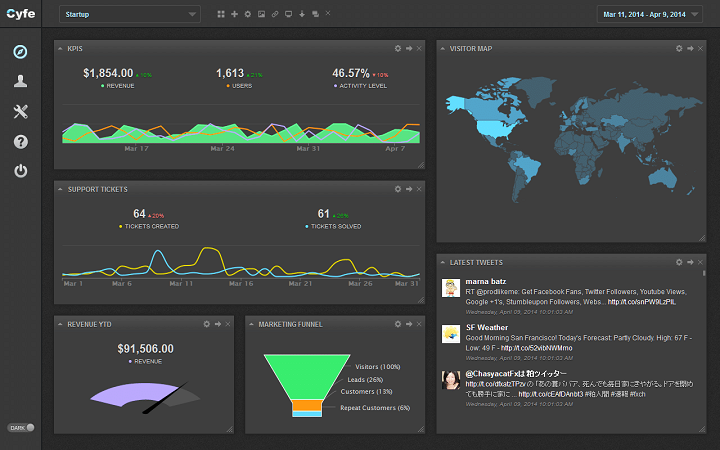Marketing Smarter Through Automation and ROI Tracking
With unprecedented tools for digital marketing, you need to ensure you’re marketing smarter, not just harder.

If the modern economy is defined by one thing, it’s flux. Markets change faster than ever, consumers can fulfill their desires with frightening ease and speed, and new revolutionary tools come into play seemingly every week. Keeping your marketing up to date can be frustrating and time-consuming, as can figuring out whether or not you’re getting good ROI on your marketing investments.
Being able to parse the ocean of marketing tools and platforms is the key to marketing smarter. Getting a grasp on your marketing ROI is vital for projecting future marketing decisions, even as markets and target audiences shift and change. In this article, we’re going to look at how you can market smarter in a dynamic economy, and why this is so important.
Why You Need To Market Smarter
Digital marketing has made marketing more scalable, flexible, targeted, and precise, while also bringing new audiences to companies of all sizes. However, if all that your marketing campaigns are doing is adding to Facebook and Google’s ad revenue, or filling up the spam folders of your customers’ inboxes, it doesn’t matter how high tech your tools are. You need leads, conversions, and real-world sales, or else your marketing budget becomes a black hole for your bottom line.
Marketing automation tools are a great way to bring together all of the marketing components and insights you need in a single dashboard. They can help you organize your marketing initiatives, and track performance in real-time. Once you’ve got this comprehensive view of your campaigns, you can begin to measure your ROI to see how effective your marketing is at translating into real business. Let’s jump in to see what tools are best equipped to support your organization, as well as tools for boosting your ROI.

Marketing Automation Tools
Marketo: Marketo is considered one of the premier marketing automation tools, with features like web personalization, social marketing, and email marketing tools. Designed and developed by Adobe, Marketo shapes the digital marketing experience with a full toolbox, giving you the power to cover any digital channel.
Extremely easy to use and fully integrated to remove the need for third-party marketing tools, Marketo can also be seamlessly connected with Salesforce. The main drawback of Marketo is its hefty price. Since bursting onto the market in 2006, its price has risen steadily. However, as it accomplishes the goals of many different automation tools, some organizations find that the investment is worth it.
Hubspot: Hubspot is probably the most well-known marketing automation tool, and this reputation is well-earned. With advanced software for a wide range of marketing pursuits, Hubspot is particularly great for landing pages, shoppers support, SEO, and more. It is also one of the best platforms for integrating Dynamics 365, Salesforce, and SugarCRM, among others uniting CRM, sales, and inbound marketing. Hubspot is also an unparalleled knowledge hub, with a resource library including courses, video sessions, training, and more on a single platform. Similar to Marketo, you get what you pay for with Hubspot, which means it’s quite pricey, including an upfront onboarding fee along with monthly fees. It can also be a little trickier to get a handle on, because of its vast functionalities.
Pardot: From Salesforce, Pardot brings tracking, communications measurement, and content customization for users looking to analyze several campaigns. Primarily targeted for B2B enterprises, Pardot is a state-of-the-art marketing automation platform that ensures you’re communicating with the right potential customers, in the ideal language at the right time. Its Lead Deck functionality keeps your updated on prospect activity, including when a prospect visits your website. A simple and immediate follow-up email can help guide them further down your sales funnel. Pardot also has great customization and customer support, to help you get the most out of the platform. Pardot is quite expensive and has fewer integrations than similarly priced marketing automation platforms like Marketo and Hubspot, but it’s ideal for a company already acclimated to Salesforce.

Improving Your Marketing ROI
Social Media Tracking: Social media is going to be a huge part of any automated marketing efforts, but you need to keep a close eye on how your social budget is being spent, and whether or not impressions are turning into sales. The best way to do so is with a social media tool. Kissmetrics and Cyfe are two great options for tracking the value of conversations with targeted audiences that are interested in your brand. Tracing the effort and expenditure you put into social media marketing, by combining insights from your marketing automation, social media tool, and Facebook, Google, Twitter, and LinkedIn’s ad dashboards.
Customer Relationship Management Tools: As mentioned with Hubspot above, Customer Relationship Management (CRM) tools help businesses track their relationships with prospective and existing customers more effectively. This process is elemental to understanding your marketing ROI. Ideally, it’s best to invest in a CRM platform that covers your entire company, and all your various customer connections. These can be pricey, especially for top of the line products like Hubspot and Salesforce. However, these solutions do a great job of scaling with your business as it grows, so a hefty upfront cost can pay off in quick and lasting growth.
Are you looking to market smarter? Does your brand need to be more adaptable to accommodate all of your marketing channels? Is your website functioning as a vital tool in your sales funnel? If you need answers to any of these questions, contact the team at Vrrb today and we’ll point you in the right direction.